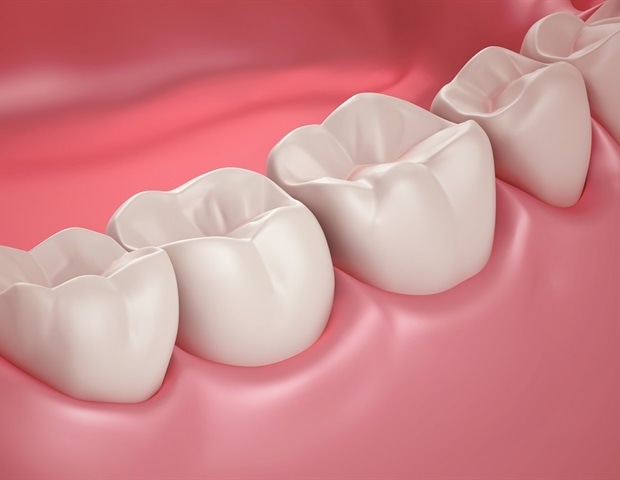
Most individuals, when they consider pythons, visualize the massive snake constricting and swallowing victims complete. However do you know that pythons initially maintain onto their prey with their sharp, backward-curving enamel? Medical researchers have lengthy been conscious that these enamel are good for greedy tender tissue fairly than chopping by means of it, however nobody has but been in a position to put this idea into surgical observe. Through the years, mimicking these enamel to be used in surgical procedure has been a frequent matter of dialogue within the lab of Dr. Stavros Thomopoulos, a professor of orthopedics and biomedical engineering at Columbia College.
Biomimicry key to new examine
A number one researcher centered on the event and regeneration of the tendon-to-bone attachment, Thomopoulos is especially serious about advancing tendon-to-bone restore, needed for rotator cuff restore and anterior cruciate ligament reconstruction. In a paper revealed immediately by Science Advances, his staff reviews that they’ve developed a python-tooth-inspired gadget as a complement to present rotator cuff suture restore, and located that it almost doubled restore power.
“As we get older, greater than half of us will expertise a rotator cuff tear resulting in shoulder ache and decreased mobility,” stated Thomopoulos, who has joint appointments at Columbia Engineering and Columbia’s Vagelos School of Physicians and Surgeons because the Robert E. Carroll and Jane Chace Carroll Professor of Biomechanics (in Orthopedic Surgical procedure and Biomedical Engineering). “The very best medical intervention is rotator cuff surgical procedure, however a remarkably excessive proportion of those repairs will fail inside simply a few months. Our biomimetic strategy following the design of python enamel helps to reattach tendons to bone extra securely. The gadget not solely augments the power of the restore however will also be personalized to the affected person. We’re actually excited concerning the potential of our gadget to enhance the care of rotator cuff accidents.”
Rotator cuff accidents
Among the many most prevalent tendon accidents, rotator cuff tears have an effect on greater than 17 million individuals in america annually. The incidence of damage will increase with age: greater than 40% of the inhabitants over 65 years previous expertise a rotator cuff tear.
As a result of rotator cuff tears usually happen on the tendon-to-bone insertion website, rotator cuff restore is aimed toward anatomically restoring the tendon attachment. Surgical restore is the first remedy for restoring shoulder perform, with greater than 600,000 procedures carried out yearly in america at a price of $3 billion.
Nevertheless, efficiently reattaching tendon to bone stays a major medical problem. Excessive failure charges happen following surgical procedure, with charges growing with affected person age and tear severity. These charges vary from 20% in youthful sufferers with minor tears to a staggering 94% in aged sufferers with large tears. The commonest failure of rotator cuff repairs is sutures tearing by means of the tendon on the two or 4 greedy factors the place forces focus.
Whereas there have been developments in rotator cuff restore strategies over the previous 20 years, the basic strategy of stitching two tissues collectively has remained largely unchanged, nonetheless counting on sutures transferring rigidity at high-stress greedy factors. Following tendon-to-bone reattachment surgical procedure, sutures can tear by means of tendons at these factors of excessive stress, a phenomenon often called “suture pull-through” or “cheesewiring,” resulting in repair-site gapping or rupturing.
“We determined to see if we might develop a tool that mimics the form of python enamel, that might successfully grasp tender tissues with out tearing, and assist cut back the danger of tendon re-tearing after rotator cuff restore,” stated Iden Kurtaliaj, the examine’s lead writer and a former biomedical engineering PhD pupil within the Thomopoulos’ lab.
The gadget
The staff’s authentic concept was to repeat the form of python enamel, however they went a lot additional, utilizing simulations, 3D printing, and ex vivo experiments on cadavers to discover the connection between tooth form and greedy vs. chopping mechanics. Kurtaliaj manufactured a variety of tooth designs, optimized particular person enamel, arrays of enamel, and eventually a rotator cuff-specific array of enamel. The top consequence was a biomimetic gadget, made from a biocompatible resin — an array of enamel atop a curved base — able to greedy, not chopping, tendon. The enamel are comparatively small — 3mm excessive for a human rotator cuff, about half the size of a normal staple — in order that they will not poke by means of the tendon. The bottom might be personalized through 3D printing to match the patient-specific curvature of the humeral head on the supraspinatus tendon attachment website (probably the most generally torn rotator cuff tendon).
We designed it particularly in order that surgeons will not have to abandon their present approach–they can merely add the gadget and enhance the power of their restore.”
Iden Kurtaliaj, examine’s lead writer
The staff
Kurtaliaj led the analysis as a PhD pupil below the mentorship of Drs. Stavros Thomopoulos and Man Genin, the Harold and Kathleen Faught Professor of Mechanical Engineering at Washington College in St. Louis, with enter for medical implementation from Dr. William Levine, Chair of the Division of Orthopedic Surgical procedure at Columbia College’s School of Physicians and Surgeons.
“As a consequence of our laboratory’s shut collaboration with orthopedic surgeons, we had been particularly lucky to get enter from Dr. Levine, together with different surgeons at Columbia, all through the gadget’s design improvement course of,” stated Thomopoulos.
Subsequent steps
The researchers at the moment are working to develop a bioabsorbable model of the gadget that might degrade because the rotator cuff heals again to bone, additional enhancing its medical applicability. They’re additionally making ready for a pre-submission assembly with the FDA to facilitate the transition of their gadget into the market.
Supply:
Journal reference:
Kurtaliaj, I., et al. (2024) Python tooth–impressed fixation gadget for enhanced rotator cuff restore. Science Advances. doi.org/10.1126/sciadv.adl5270.